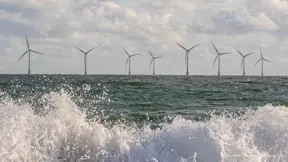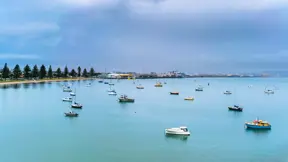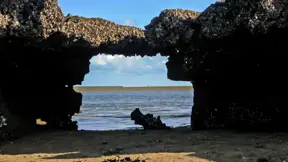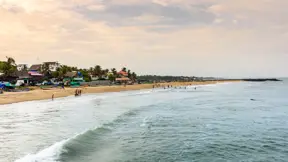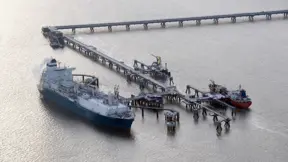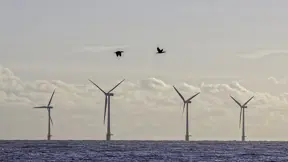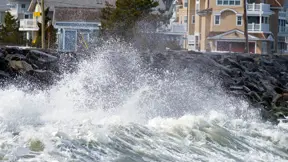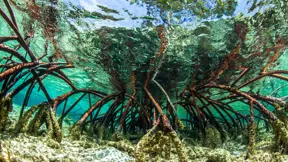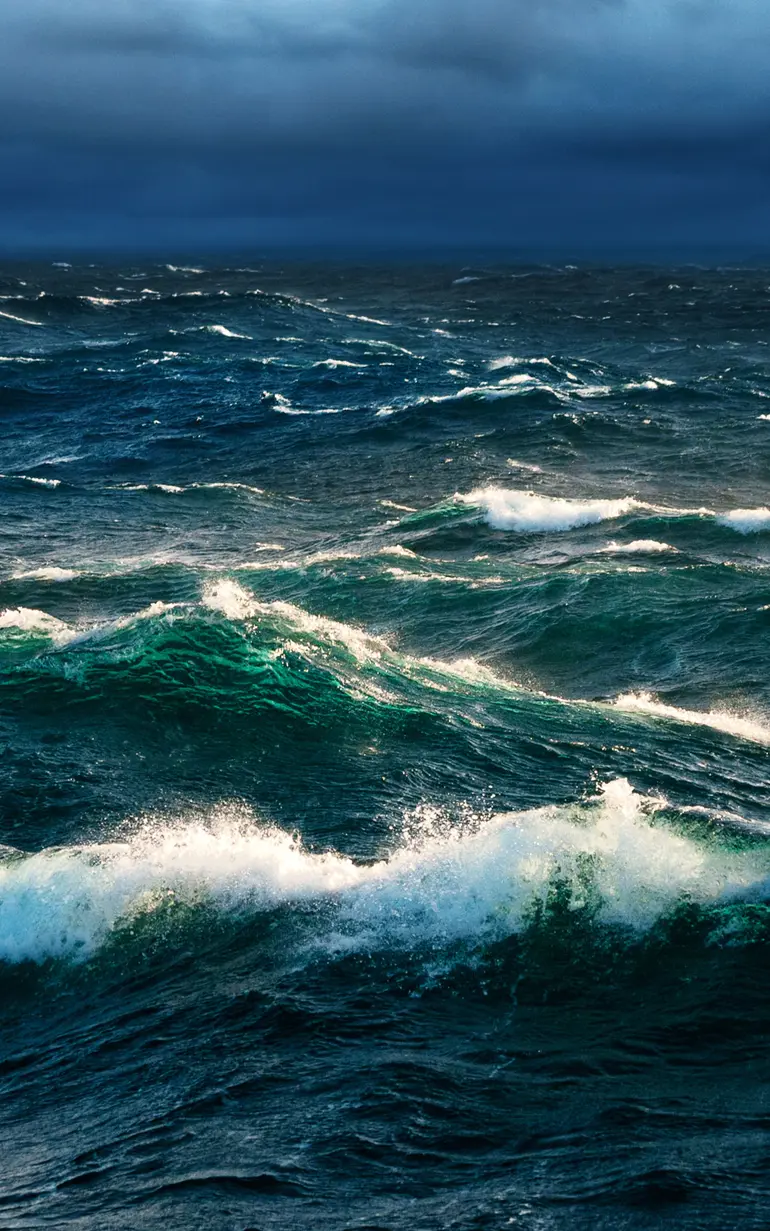

MIKE 21 Spectral Waves
Calculate wind-waves across all seas to aid marine infrastructure planning and design
MIKE 21 Spectral Waves (SW) is advanced software for simulating wave propagation and transformation. Tailored for environmental impact assessments and coastal infrastructure planning, it provides intricate simulations of wind-generated waves and swell, offering detailed forecasts of wave conditions in offshore and coastal areas.
Using spectral wave models, MIKE 21 SW accurately represents the energy distribution across different wave frequencies and directions, ensuring precise simulations of wave behaviour under various meteorological and oceanographic conditions. Equipped with features such as fluid mud dissipation and compatibility with high-performance computing, MIKE 21 SW offers comprehensive support for offshore energy, port design, and coastal resilience projects. Its user-friendly interface and powerful modelling capabilities empower engineers, researchers, and environmental consultants to analyse wave conditions, assess coastal risks, and design resilient coastal infrastructure with confidence.
How does MIKE 21 Spectral Waves help?
No in-house modellers?
Get our expert modellers on board for your consulting projects either as a partner, to provide extended user support or for model and project reviews. Submit an inquiry
Areas of application

Climate change resilience and impact
Predict future wave climates to enhance coastal adaptation and resilience planning.

Coastal engineering studies
Transform offshore wave data for robust coastal infrastructure design and mitigation.

Coastal erosion mitigation strategies
Evaluate the impact of current and future wave climates on erosion trends and coastal flooding.

Coastal flood risk management
Simulate wave-induced flooding scenarios to refine coastal flood risk management.

Ecological restoration projects
Model wave interactions with coastal habitats to design ecologically harmonious restoration projects.

Environmental Impact Assessments
Enhance impact assessments by incorporating detailed wave field simulations.

Forecasting and early warning systems
Use accurate meteorological data to predict wave conditions for improved marine safety and planning.

Green infrastructure & nature-based solutions
Integrate wave dynamics in green infrastructure designs for enhanced sustainability and resilience.

Metocean condition insight
Generate multi-year wave hindcasts to establish environmental design criteria for offshore projects.

Offshore planning, design, and construction
Apply detailed wave simulations to ensure offshore structures are safe and durable.

Oil spill modelling & emergency response
Simulate wave effects on oil spills to optimise cleanup strategies and reduce environmental impacts.

Optimisation of dredging operations
Utilise precise wave predictions to manage sediment spills and optimise dredging activities.

Port design and optimisation
Determine wave conditions for port design, enhancing wave agitation management and mooring strategies.

Sediment transport and morphology
Analyse how wave fields affect sediment transport and coastal morphology for sustainable management.

Ship navigation planning support
Predict future wave conditions to improve route planning and navigational safety.

Wave condition assessments
Provide comprehensive wave analysis across marine and coastal applications to ensure effective solutions.
Additional capabilities & unique features
Explore our latest support resources, including guides, videos, and FAQs in our Knowledge Base.
Calculate the distinction between wind sea and swell to better assess offshore and nearshore sea states
Achieve improved results in large scale models where swell is important, in nearshore areas and in offshore applications by accessing new source term parameters for wind sea and swell. This includes additional options for atmospheric interaction (wind input and swell dissipation) and white capping following Ardhuin et al. (2010). In addition, water density as a function of water temperature and salinity and air density as a function of surface pressure, air temperature and relative humidity can be accounted for in your calculations.Watch video
Gain a deeper understanding of complex wave-air phenomena with new output options
Take advantage of recently extended output options to expand the realm of potential applications and better understand complex wave-air phenomena in your projects. For example, users can now neutral wind speed, water density and air density. Furthermore, you can calculate the Stokes drift of fluid particles in the waves. Watch video
Efficiently generate unstructured meshes
The software features an efficient MIKE Zero tool to support the generation and handling of unstructured meshes including the definition and editing of boundaries.
Analyse and visualise unstructured data using a built-in Data Viewer
The Data Viewer is an efficient tool for the analysis and visualisation of unstructured data including processing of animations. A user can view meshes, spectra, bathymetries, results files of different format with graphical extraction of time series and line series from plan view and import of graphical overlays.
Supports both depth-adaptive and boundary-fitted unstructured mesh
MIKE 21 SW provides an optimal degree of flexibility in describing bathymetry and ambient flow conditions through the use of both depth-adaptive and boundary-fitted unstructured mesh.
Complete more comprehensive studies
MIKE 21 SW includes an extensive range of model output parameters including wave, swell, air-sea interaction parameters, radiation stress tensor and spectra.
Includes fully spectral formulation and directional decoupled parametric formulation
Get more done in less time with the modernised MIKE Zero user interface
Save time and improve your modelling workflows using MIKE Zero’s upgraded editors and viewers. Take advantage of new keyboard shortcuts and themes, improved tabbing, tear off and cascade functionality plus easier access to User Guides and Scientific Documentation.
Access new tools, Cloud applications and an enhanced graphical overview from the redesigned MIKE Zero start page
MIKE Zero, DHI’s fully Windows integrated graphical user interface, is now better than ever and comes standard with all MIKE 21/3 software. Enjoy easy access to new MIKE Cloud applications and Cloud-enhanced functionality, plus an extended set of MIKE tools within theme-based (rather than product-based) interactive workflows. Ensure important model components such as sources and structures stay at the forefront with a new interactive, customisable floating mapping window. Lastly, the updated tabbing functionality will help you work in a more organised and efficient manner.
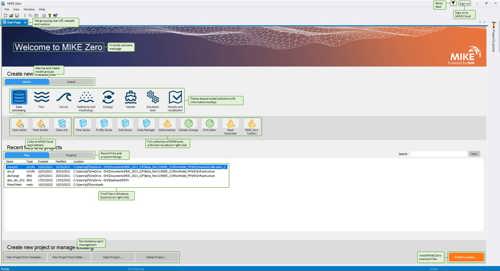
Let's get started
Learn how your project can benefit from this advanced spectral wind-wave modelling software.
You may also like
Related technologies
MIKE 21 Mooring Analysis
Assess the dynamic effects of wind, currents and waves on vessels and other floating structures.
MIKE 21 Wave Model FM
Simulate and analyse wave dynamics in ports, harbors, and coastal areas.
MIKE 3 Wave FM
Analyse wave climate impacts on offshore, coastal, or port infrastructure with an advanced 3D model.
How can we help?
With our global network of offices, we make sure you get the right answers to your local needs. Let us know what you're interested in (e.g., product features, trial license, pricing, etc.) and we will get back to you.
